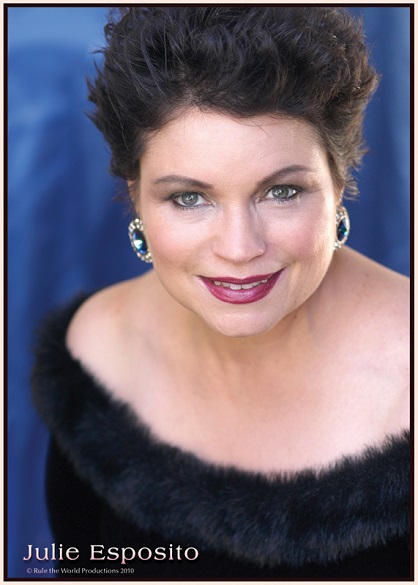Record series exist for as many reasons there are labels. Sometimes the reasons are forthright and in your face. Other times they exist purely for commercial promotion, and yet still for others the ties that bind the various recordings can be as slippery as freshly birthed umbilical cord. As with many things in music or art or whatever, I’m generally more attracted to dots I can’t easily join. I like the feeling of sensing there exists a thread that connects it all. I live to peel back the whatever obscures what’s beneath, to dial out the interference interrupting my connection to it discover the unity that gives meaning to the series as whole. In the case of Emerald Cocoon’s Alone Together series, that thread is intimacy.
Kurt Vonnegut wrote,”Many people need desperately to receive this message: ‘I feel and think much as you do, care about many of the things you care about, although most people do not care about them. You are not alone.’” In a world careening into a paradoxically disconnected and alienated rancid throng of shit, intimacy, genuine intimacy, is increasingly rare and mighty valuable. You get it where you can find it, and outside of its usual association with sex, I’d say its inherent value increases. Consider intimacy from its nemesis alienation and you become a little bit more aware of the value of Emerald Cocoon’s Alone Together. As opposed to dwelling on how these times can make me feel, there’s a warmth, there’s something inviting about each of these recordings by solo artists which draw me in, offering reprieve from, well, the world. That isn’t to say that these recordings are escapist. Far from it. Each in their own way, they unflinchingly dive right into our experience of the world. But it’s the way that they function, creating unique vistas or gutting and recreating worlds within worlds, that opens up possibilities for the listener. Subsequently that creates another unifying thread of the series: possibility. Intimacy and possibility. I think Emerald Cocoon is on to something here. Each record is in its own way part of the avant-garde tradition in music, though some range more to the punk/noise end of the spectrum while others are bit more academic sounding. But forget about any kinna pretense. That shit ain’t happening here.
The first record in the series is by Christina Carter. Obelisk/Tholos is a pair of vocal meditations that create space to focus, laser-like, on the subtleties of varying timbre in Christina’s now famous, ethereal vox. Now a well-traveled vocalist, we’re all fortunate enough to have grown accustomed to Carter’s wafting style that amplifies every moment, and like Patty Waters before her, Carter uncannily reveals the moments between the moments via sounds between sounds, forming a complex and highly personal continuum that’s emblematic of both the physical and the noetic. Both tracks here are full of mischievous guile in that they take me by my ear, hinting at melodies and lead me one way creating the expectation of a resolution only to gently direct me elsewhere, cleverly leaving behind a lack thereof, masterfully creating the tense desire for more. Her voice here is like a good drug. It’s like she leaves the stage at a high point only she repeats that technique several times within the same piece. But beatitudes can only be delineated by contrasts. Pretty fucking ingenious. Carter expertly glides along this tightrope, her voice hovering, often quavering above the line that connects two points, the illusion of a beginning and an ending. It all results in an seraphic experience fluttering around mere language. Atavism and future collide in a restlessly placid present. Time is obliterated. Carter nearly forms words, and like her knack for teasing the listener with fragmented melodies, she’s capable of forming a discreet tension using the listener’s conditioned expectations while intoning formant glimpses predating language and simultaneously superseding its inherent limitations. Stunning, sometimes frustrating and always engaging.
Both tracks are punctuated with bells that give the recordings a ritual feel. Oh, and a bird. There’s a bird there, too. Or maybe not. Maybe they’re just bells and the bird was outside my window. Maybe these are all just questions. It’s up to you. It’s very intimate and in the end, creates more possibilities that existed before you dropped your needle.
Second in the series is an outing by Ashley Paul. I can’t help but think of the word ‘eclectic’ when listening to both songs in that they’re the culmination of so many different ‘out’ techniques and applications of past avant artists. To my ears the element of these ‘songs’ here that seems most emphasized is structure – creating or destroying – the new and the old, the impossibility of pop but its beckoning anyway. What constitutes song?
Similar to the Carter disc, this is gorgeous music with a strong feminine character that simultaneously falls apart and comes together. Unlike Carter’s contribution, though, the near-weightless tension in these recordings does not rely on the idea of a sense of imminent resolution. Rather, the instrumentation – guitar, sax, vox and crotales, all played by Ashley, so I’m assuming these were multitracked performances – delicately gird a tenuous cohesion, begging the question of whether or not these can be considered song at all. Sure, this has all been worked over in the past but new artists introduce fresh takes, and this is the case with Ms. Paul. So at this point in the game, most of us who listen to this “type” of music really don’t give the question of ‘what is song’ much weight. Whether or not it is song is of little importance. Does it cohere, somehow, in some way? That’s more important. If it doesn’t, why? Does it string together its own vocabulary and evolve from being non-idiomatic and convince me that a new language is forming? Does it create the possibility of an ecology? Those are the high-fallutin’ questions, but try as I might, I’m still interested in the proximity of these two pieces to song, specifically pop structure, probably because these records are imbued with melancholy, maybe even loss, the kind sentiment so many pop songs express. Or perhaps, instead, they posses quiet joy or peace. Emotion is speculation. What’s more important here is how it ties into the aforementioned thematic cord, and Paul succeeds without any doubt with her quietly beautiful eye-to-eye intimacy shining through these delicate songs like yearning rays of light pushing through cracks in boarded up windows in a burned out building I refuse to abandon. Intimacy? Check. And because her records do draw from so many 20th C. influences, her music, like so many sound artists and musicians working today, is saturated with possibility. Both in the fragmentary expressions of each instrument and in the big picture, I keep asking, ‘What’s next?’ So it mirrors experience. That’s one litmus test it’s passed and a reason I’ll listen to and recommend it.
Third record in the series is by a physicist who goes by MHFS. How does that influence his work? I dunno, but I bet there would be a whole chicken truck full of people out there willing to speculate in writing about that. Not me. Hell, it’s a good day around here when the shoes get tied. And hey, maybe that’s a reasonable analog to the MHFS methods of dismantling music. The key, of course, would be the ability to reassemble the collection of sounds in an order that keeps me, and you, engaged. There’s been lots of folks over the last 10, 15 years who have made that claim, but I can honestly say that there’s only an infant’s palmful of ’em that really live up to the hype. Not that there’s been much fanfare around an MHFS release and that’s no fault of his own. In fact, that’s a good thing because if Michael Jackson hadn’t died…well, I was reading Catcher in the Rye just in case it, or the neighbor’s dog, transmitted messages for me to take action. Curiously, I get the feeling that’s the same way Mark Sadgrove (MHFS) feels about music, particularly depthlessly repetitive music. He’s just smart enough to ignore the neighbor’s dog, that’s all. Oh, and probably say something of value about string theory. Something more than what I say to myself: “No, that string goes under the other in order to form a bow, you dumb ass!” I’ve seen where the word “folk” has been invoked, somewhat fashionably, about this stuff, but butter me sideways if this record doesn’t have more to do with early electronic pioneers like Pierre Schaffer in that, whether intentionally or not, the overall impression I get is that these have been engineered and assembled. How they were put together, I don’t know. If they were put together to achieve a certain effect, I do not know either. This ‘real music’ drips with open-ended questions about context, location and composition. Pretty fucking good, too.
Anyway, this 7” is distinctly New Zealand-ish in character. Lo-fi with varying recording locales (or the illusion of that), broken songs, fragments, fragments of fragments, seemingly an adherent of the Free Noise school (yeah, it’s a school now, didn’t you know?). It’s the sort of aural ontology the kiwi noise folks have mastered. This is disdain manifested and the joy derived from that disdain. Creation/destruction…all that stuff. I get it. As far as intimacy goes, there is a sort of Alastair Galbraith feel in fleeting moments here and there when MHFS deems it appropriate, something like the beginning of a riff, a guitar line that seems to be heading in a direction only to be abruptly interrupted to introduce a different sound, origins unknown and heading off in a totally different direction. That’s what we call one fucked up compass in the States. I think. This is a pretty abstract recording, but that doesn’t obliterate the fact that I feel like I’m sitting in the room with him, and despite the textural shifts, the collage effect, it all feels something close to seamless. However, to try and carry this over to a seamless recording would have probably off’d its charm and aesthetic. It’s robust patchwork assembly is its strength. In contrast to the two previous records in this series, The Grey Lynn Homeless Set is blatantly more aggressive and contrasts wildly with Carter and Paul, but doesn’t break away from the string running through each record. If you’re acquainted with the feeling that you’re falling apart or dissociative feelings of distance and disorientation from yourself, then you should be right at homelessness with this record.
Speaking of New Zealand, there’s little question of the influence that music has had on Yek Koo (Helga Fassonaki) and the sounds, techniques and aesthetic she embraces in her work. Her’s is the next record in the series and Oh Woman/Flame Creation marks a significant shift in what we expect from Helga’s solo Yek Koo work as well as Metal Rouge, the outstanding group of which she’s a part. Well, on one song anyway. On Oh Woman (and yes, it splats face-first in the spectrum of song) she’s decidedly working toward a New German Wave direction, if very loosely. I’m referencing the darker, more cavernous aspect of those sounds and the beats in tandem with electronics. It all gives rise to a host of comparisons probably too lengthy to get into here. Though Oh Woman isn’t as difficult to pin down as her other work, what breaks through is that Helga can work across styles and still manage to make next-level music perfect for a family getaway picnic by your favorite polluted municipal pond or intravenous DMT teleportation. It cuts deep into bone then marrow and is a versatile compliment to other works in the Alone Together series.
Flame Creation, on the other fist of fire, mirrors more closely her work as Yek Koo or the spectacularly sublime carnage of Metal Rouge. Gone is the rhythm of Oh Woman, replaced here with more clatter, more clutter, more clang. It’s messier, maybe more devastating in a sense. The thing that works wonderfully is that the two sides pair perfectly and in doing so form a synecdoche of the series as a whole. Fassonaki succeeds in tying her work to the previous records, though, if I may say so, her work has an inherent alienation to it making it counter-intuitive to the idea of intimacy. BUT, for the last nearly thirty years, my life has revolved around broken music and odd collections of sounds, so Helga’s music is, to my earholes, very intimate, personal and always welcome. She never fails to reward. If you haven’t already, check out my interview with Helga elsewhere in this issue. There are some clues she divulges there about why alienation occurs in the sounds she makes. She can ply her wares around here any time. One other thing that sets her apart from anyone operating in these post-apocalytpic sounding neighborhoods. Helga’s vocals are unlike anyone’s, especially in context of the music she performs and records. Growing up and being fed a steady diet of Turkish psych will do that to you. We all benefit.
Helga, whether she’s solo or working with Metal Rouge, is an expert when balancing the musical with non-musical. Like the other examples here, there are hints of mere fatigued musical forms here and there, scraps of an orphaned melody and maybe an accidental harmony, but they’re fused to detonate into a visceral (and I’d imagine Helga might say transcendent) experience. So even where there is variation in technique and resultant sound, there is continuity in the confusion of spacetime present throughout. For a lot of us, that’s precisely where possibility intersects with intimacy. Plus, this record, perhaps more than any in this series, seems so intimately tied with a dying world I can’t help but make mention of that here. The sounds seem as connected with global crisis as they do with each other and individual ascen-dance.
Next platter up to the plate is by Pete Swanson. You know him. By the way, he mastered all but one of the records in Alone/Together. Pete opted to do a couple of covers, one by Dadamah and the other by Gate. Kind of a misnomer, me calling them covers, though, because they are more interpretations. Highly personal ones at that. So he turns the idea of intimacy away from the performer listener to the performer and his influence. The results are really wonderful, too. His tools are an acoustic guitar and highly distorted vocals that, rather remains suspended above the music, bleed into the whole of the sound, not unlike the way both Dadamah and Morley went about their hairy business. In fact, among the many earmarks of New Zealand music rooted in the late-80’s, moving the vocals down into the mix is one of the more prominent production techniques. It probably just occurred as an accident or to purposefully try to sound unmusical as possible (I’m thinking specifically of Dead C, hence Morely), but it really doesn’t matter. Whether it’s Jeffries, Galbraith, Gate or Dead C, the vox disappeared and became just another swirl of color – typically gray – in the morass of sound. It’s identifiable, the same way you know you’re listening to an Albini produced track. That’s not a value judgment, but rather just a way of saying that you can hear something you immediately associate with a time and place, if not with a person. Interestingly, this sort of turns the idea of possibility on its ear. Instead of performances that are open-ended, signifying a multitude of choices and directions, often begging the question of musical coherence, the idea of possibility with Swanson’s takes comes in the form of subjectivity and interpretation. For fans of the era of New Zealand music that spawned an entire paradigm [burp], it’s recommended that you give this a listen. While I wouldn’t call it a radical departure from Yellow Swans, it is another glimpse into Swanson’s influences and fits nicely within the scope of Alone/Together. A benzoblast of existential psych if there ever were one, and a fitting homage to boot.
To date, the last of this series is a 7” by Jefre Cantu-Ledesma. JCL’s Love Is A Stream and other releases have reminded me at times of Flying Saucer Attack, though neither of the songs here do. Of all the records that comprise Alone/Together, this is by far the most conventionally accessible. By accessibility I’m referring to melody, structure, harmonics, rhythms and making use of pop. Um, if you’re wondering, yeah, that’d be thoughtful and good use. On both side A and B I hear much more recognizable territory than with any other example of the series save for Swanson’s take on Gate and Dadamah. While both tracks are exceptionally beautiful and highly textured, I’m thinking I have a crush on the B side here, Blut Mond. The song builds slowly toward the end with what sounds like grainy layers of processed guitar piling on as the song moves forward toward the finishing point. Cantu-Ledesma’s use of effects create a ripping or tearing sound, so it’s as if he’s working as hard at trying to destroy what he’s doing as he makes it happen. I love that effect, and though his sound has nothing to do with the Dead C, that sound is also present in a lot of their stuff, especially on the Bone 7”. But that’s about as far as that comparison goes. Cantu-Ledesma has more in common with Fennesz and could fit in very well with many of the artists working around the whole Mego scene. He uses the whole spectrum of colors in his playing and produces sounds which are unnervingly resplendent, but there’s nothing here that bespeaks anything avant-garde. Does it matter? I ask you. Faceless Kiss/Blut Mond are intimate like a kiss and speak to the possibility of stretching tone color, spatial organization and timbre within the confines of a pop structure. Of course, I’d love to hear it expanded upon moved away from the strictures of metered rhythms in order to loose upon the world a dazzling spectral display.
—
Kelly Burnette has written professionally and amateurishly for fifteen years and has been published in numerous arts, media and music outlets including SPIN, Orlando Weekly, Broken Face, Perfect Sound Forever, Michael Moorcock’s New Worlds, Foxy Digitalis and many others. He plans on avoiding incarceration and dogma.



